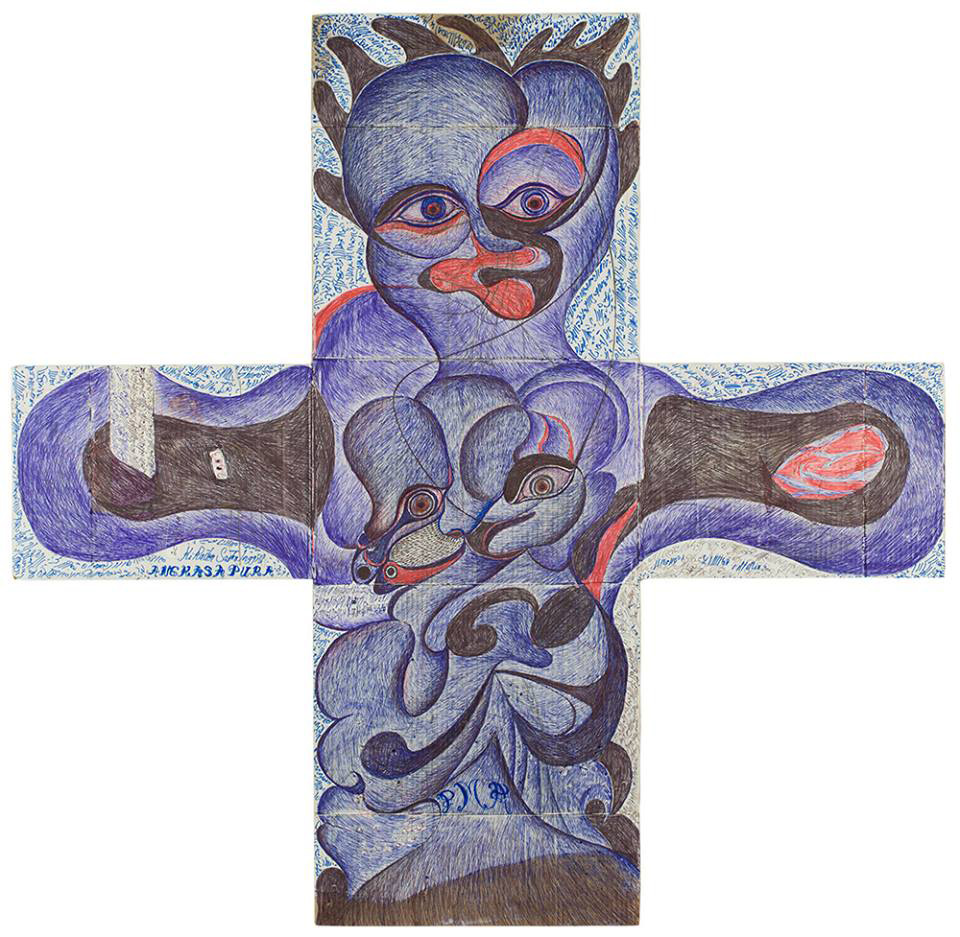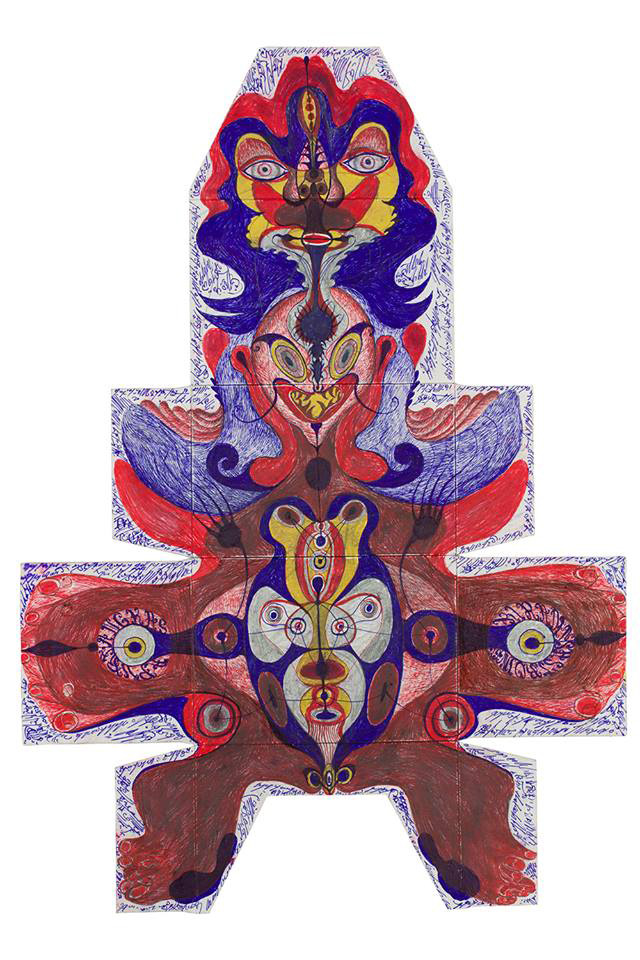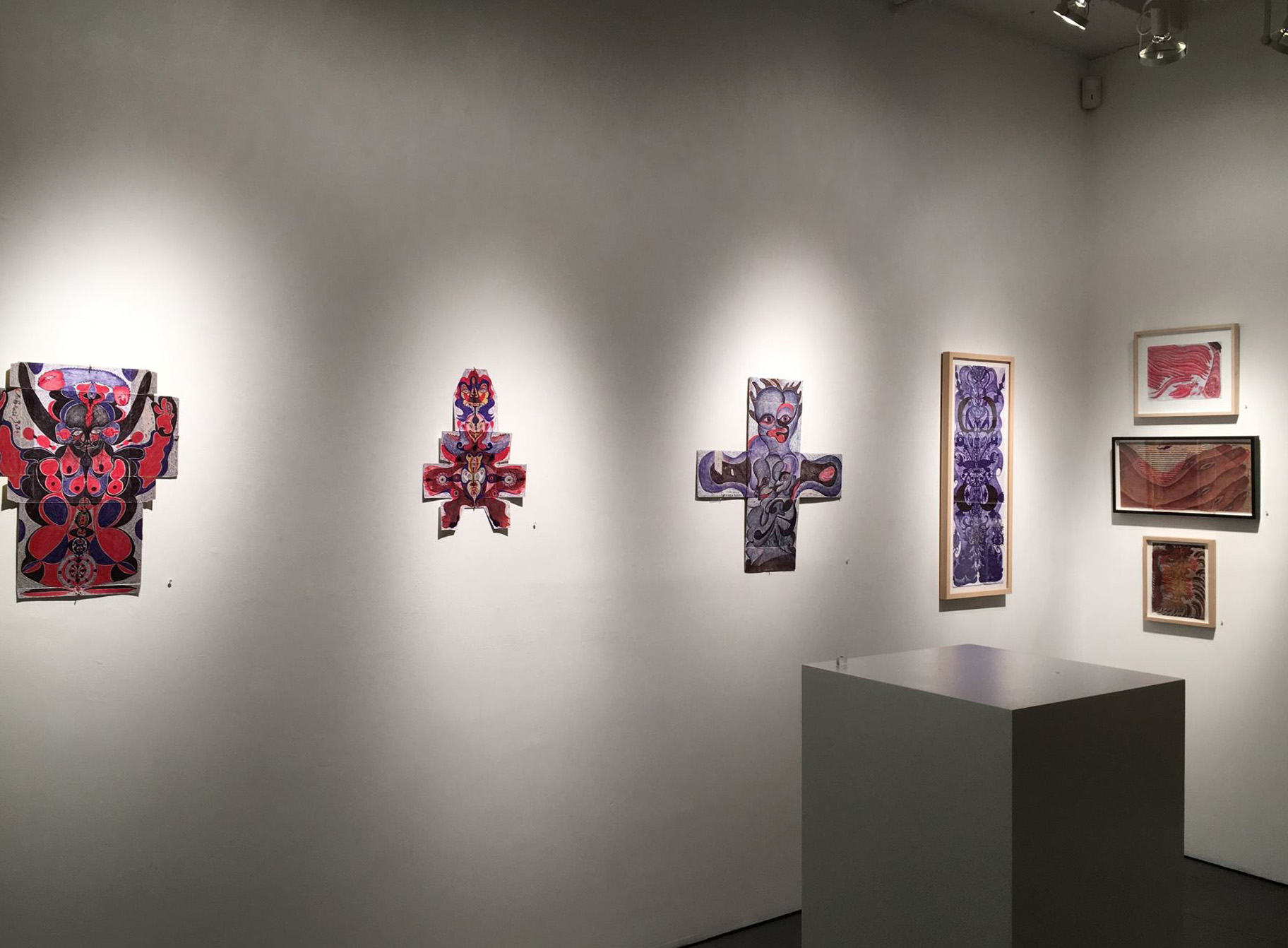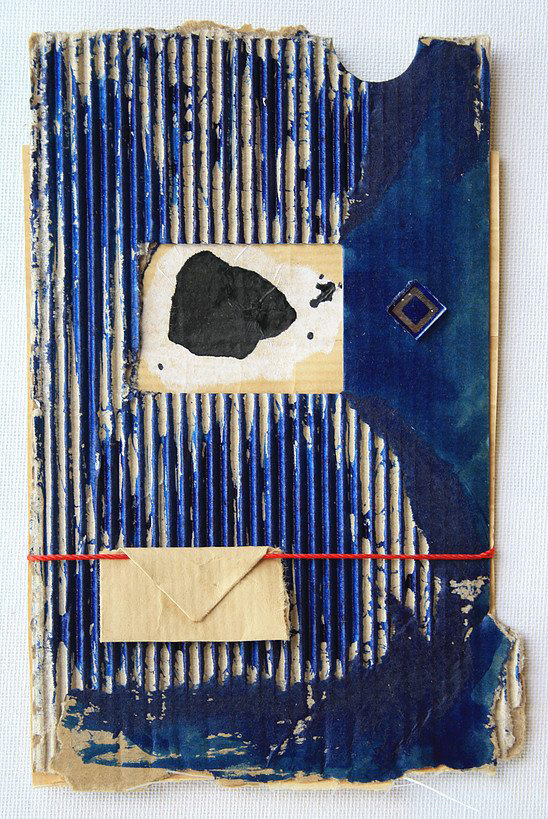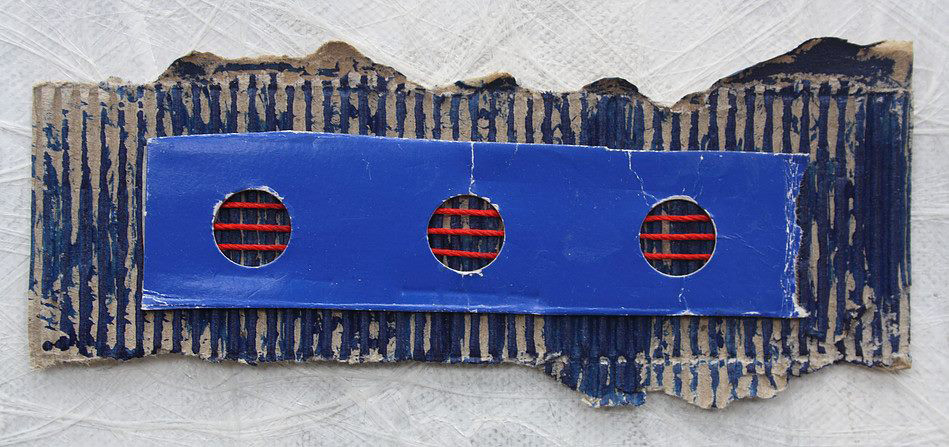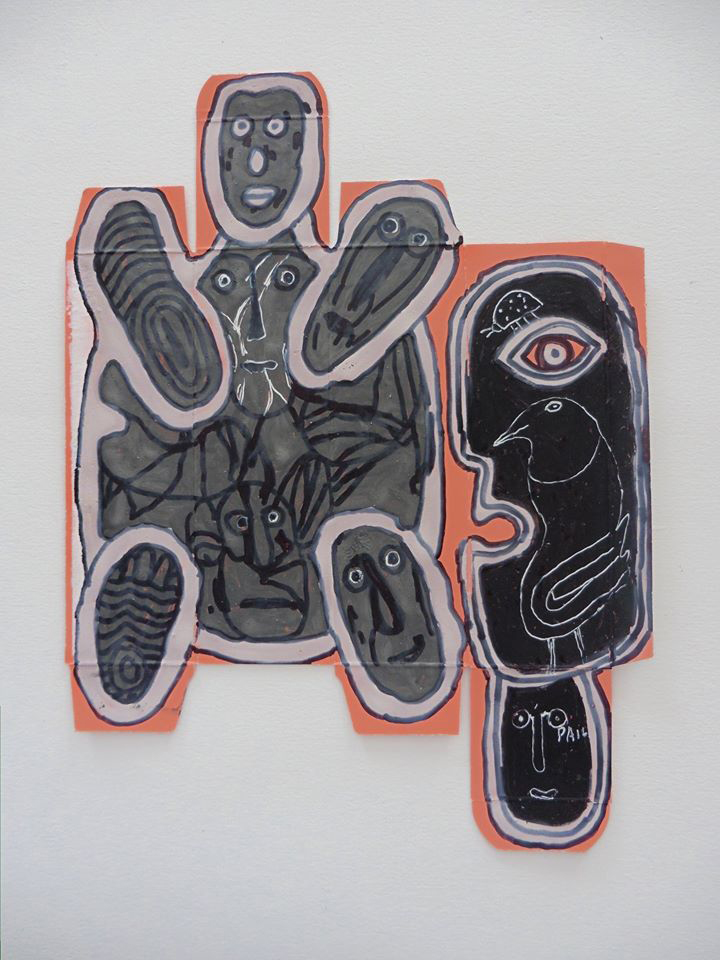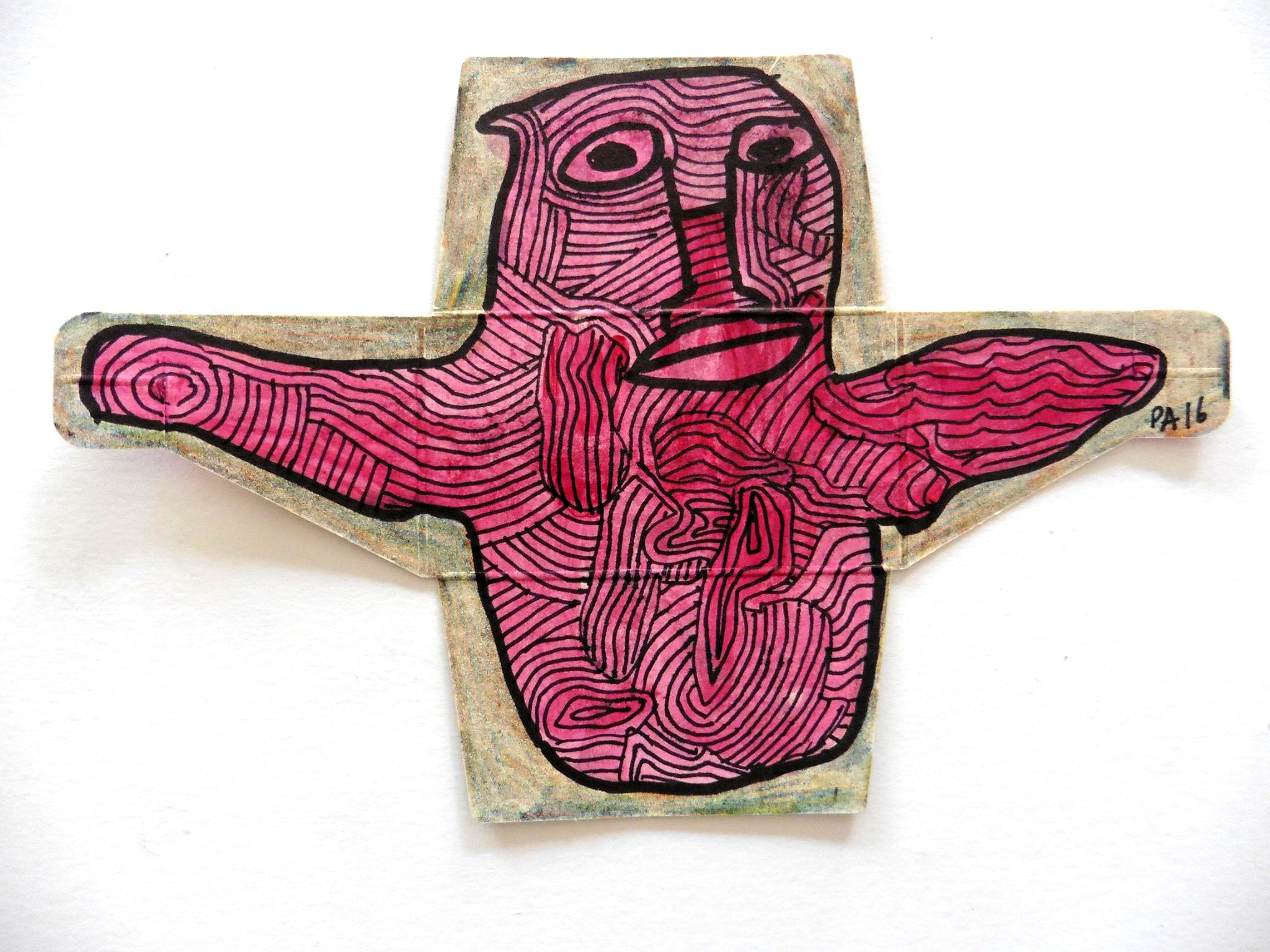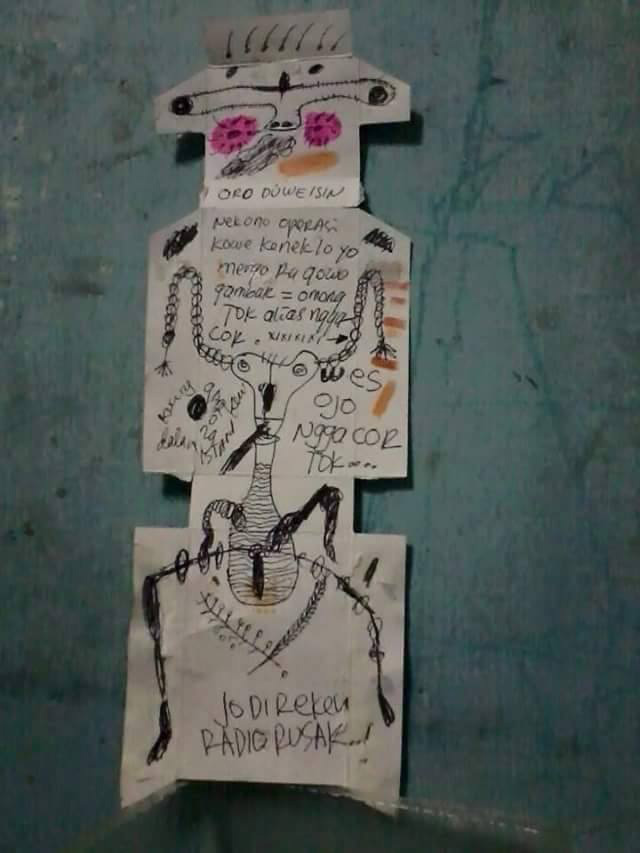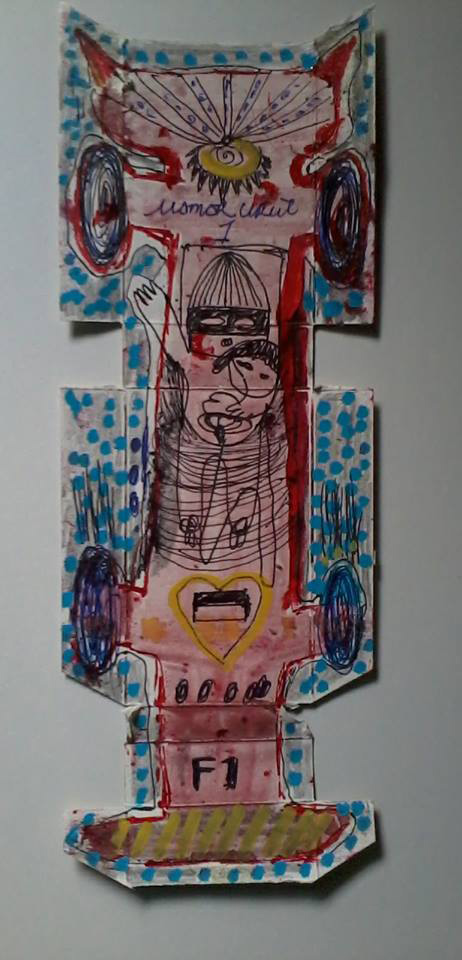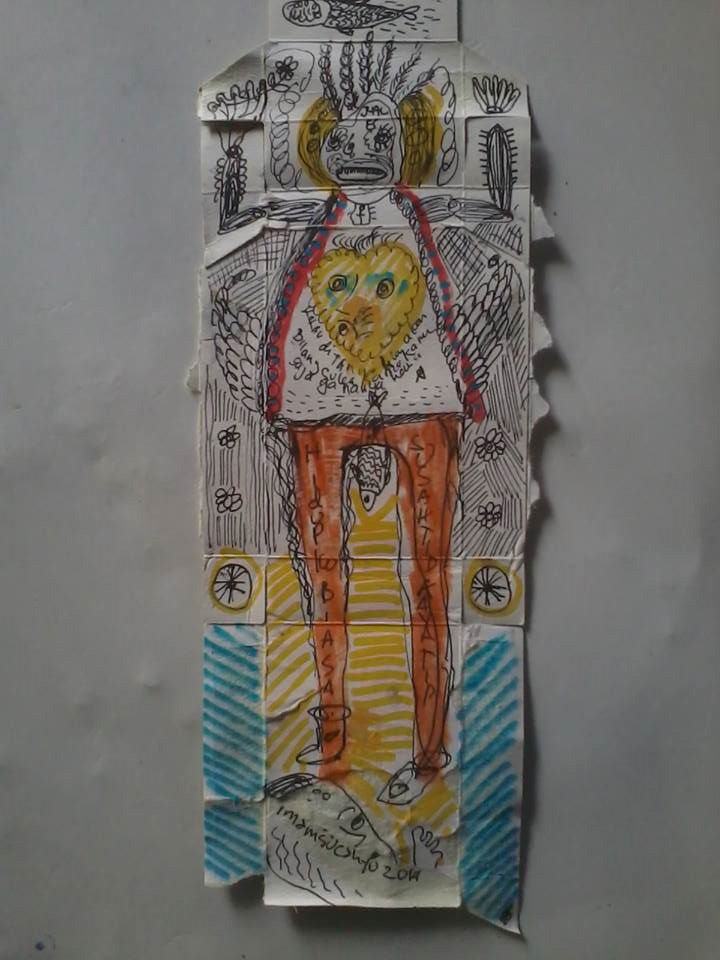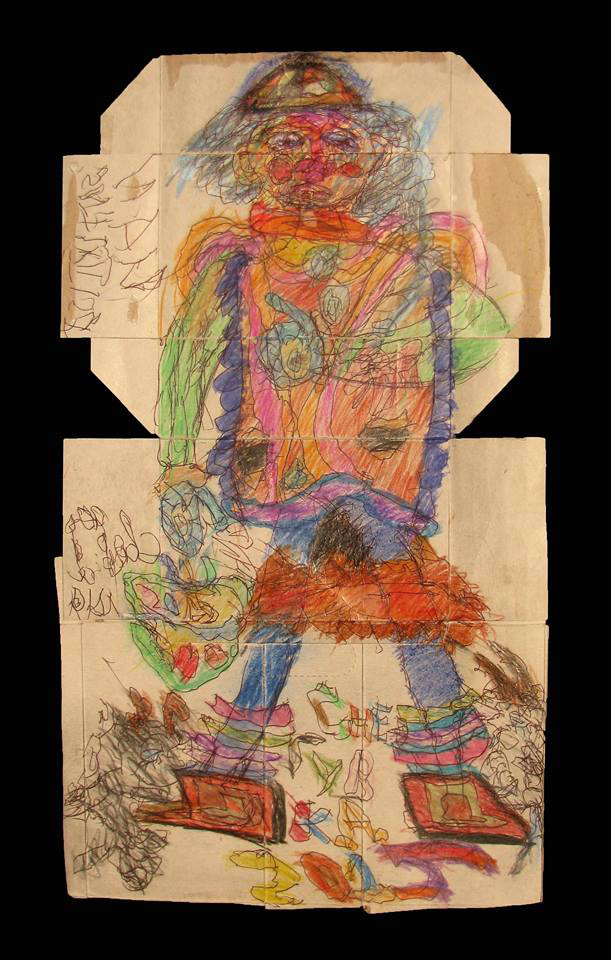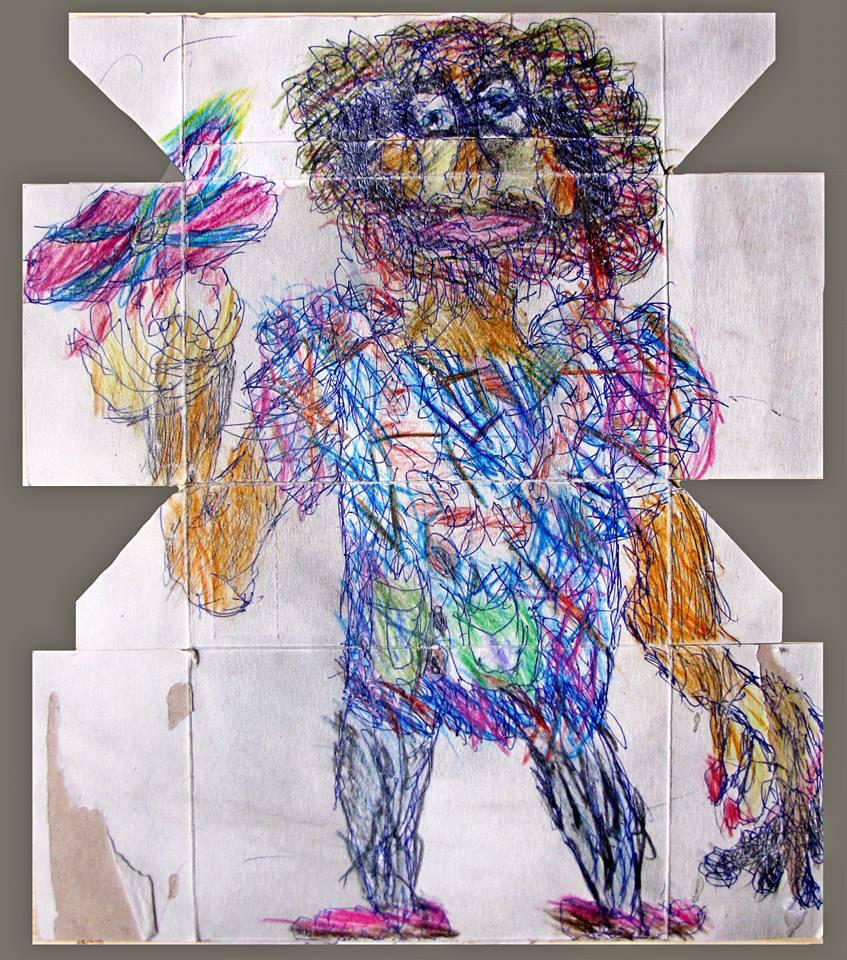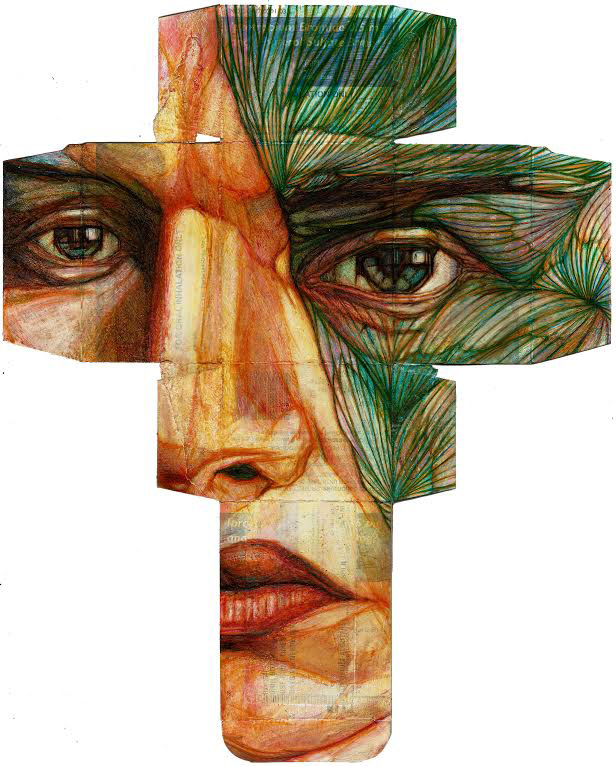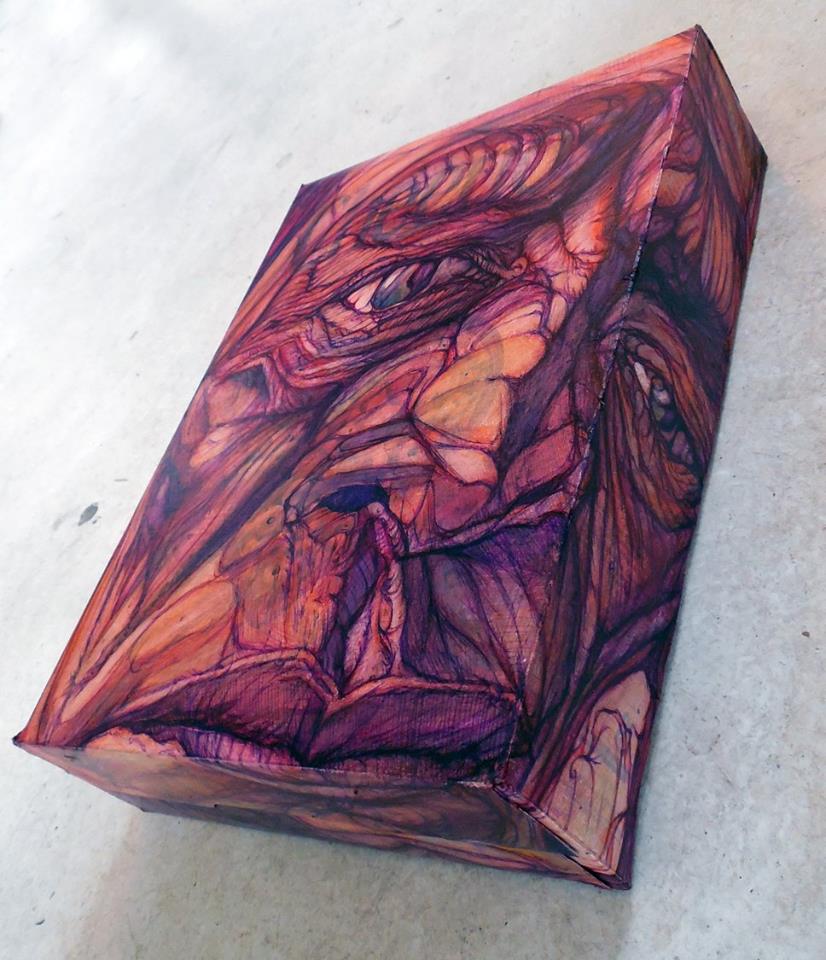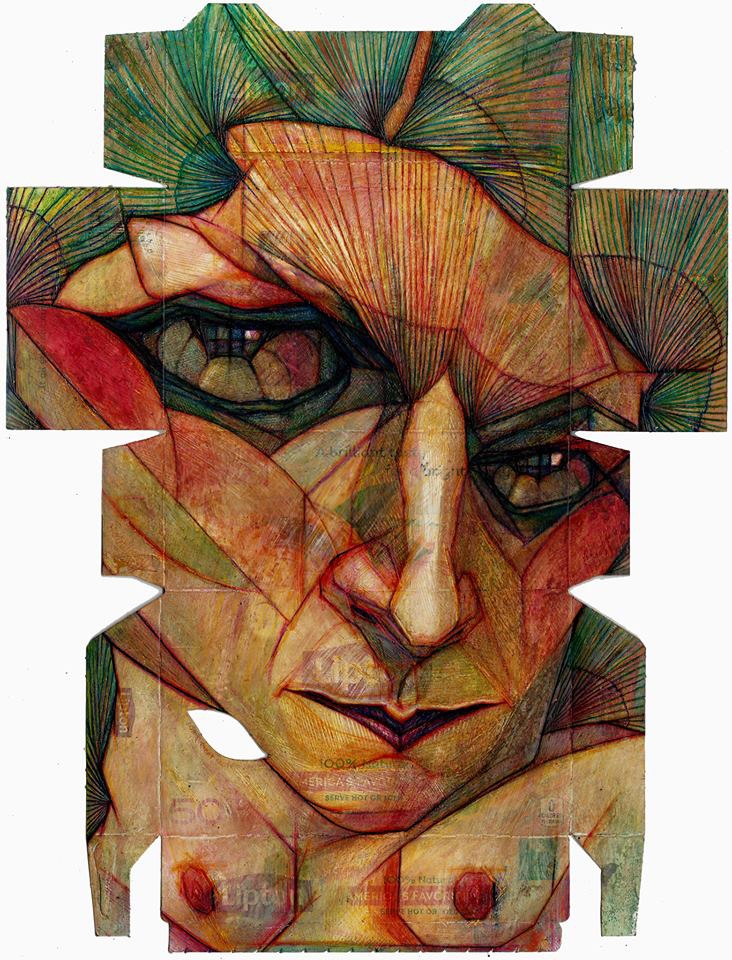Ilya Natarevich, Russia; Imam Sucahyo, Indonesi; Novi Adi, Papua New Guinea; Dion Hitchings, USA, and Pierre Albasser and Seve Ailleurs, France are several artists who are forging remarkable trails of discovery with their work on recycled box tops and cardboard. Whether they are seeking a unique way to apply a particular type of paint or other medium to a nonlinear surface; motivated by the prospects of refashioning previously crafted raw materials; or looking to recycle and reuse preexisting objects for the sake of lessening their carbon footprint, these artists are an important part of today’s landscape of fine arts.
The practice of using previously printed commercial cardboard is a resourceful method for crafting exceptional presentations. In principle, box tops and cardboard have a regulated range of space to explore ideas, and the artists must consider how best to navigate the recycled material before applying a particular medium.
Quite often these unconventional canvases are missing sections; have sharply trimmed, flapped and creased edges; and uneven surface areas. Yet these impediments are what yield the artists distinctive outcomes.
HAF was afforded the opportunity to briefly interview some of these innovators to discover their motives. Pierre Albasser, Ilya Matarevich and Dion Hitchings responded to several questions regarding their approach to creating such unique works on box tops and cardboard.
________________________
HAF: What was your inspiration to paint on recycled card board boxes?
Pierre: I began drawing when I retired and thanks to my wife who fully supports me in this pleasant activity. So I scribbled on small bits of cardboard, finding that regular drawing paper was only suited for real artists.
IIya: I like to try unusual things. Continuing to draw only in a rectangular format is a bit boring. I like the variety in all. Besides it I always feel sorry to throw cardboard packaging. This is perfect material.
Dion: Using commercial box tops instead of traditional drawing surfaces has enabled me to break down pre-existing print, images, and textures while allowing the type and pictures from the box itself to become organically part of the portrait
HAF: How long have you been working in this medium? And what medium(s) do you use on the surface?
Pierre: I started in 1992, using common ball-points as medium. In the course of time, the cardboard (excluding the corrugated), packaging out of our household), became bigger and bigger. For several years I’ve used ink remaining in empty printer cartridges also.
IIya: I use the packaging for over more 15 years. I also use a professional paper. Depending on my mood and intention.
Dion: I purposely choose to use untraditional media. I create my works with various children’s art supplies including, crayons, magic markers, highlighters and colored pens.
HAF: How does shape, size and structure impact the drawing?
Pierre: All my drawings are pure improvisations. I am unable create to order. The unfolded boxes, their peculiar perforations, but also my daily mood, bring me the ideas. The most extravagant shape is welcome as a challenge to my imagination and I never know what kind of creature will appear finally.
IIya: Typically, this process occurs spontaneously. I like to improvise. I just do the first step, and then material prompts me solutions in during of work.
Dion: The consumer box deconstructs then reconstructs the face since all my pieces tend to be portraits to fit within the shape of the box. The results are portraits that have a shattered appearance with broken and missing pieces but also form a more powerful, interesting and often disturbing viewpoint.
Michael K. Shelton, USA: Senior Visual Design & Website Director and contributing writer



